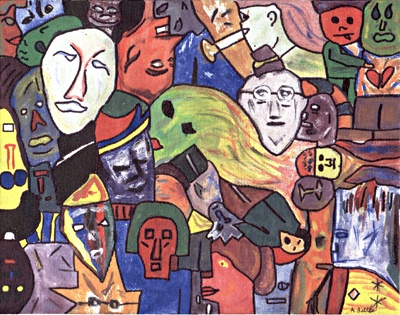All Nonfiction
- Bullying
- Books
- Academic
- Author Interviews
- Celebrity interviews
- College Articles
- College Essays
- Educator of the Year
- Heroes
- Interviews
- Memoir
- Personal Experience
- Sports
- Travel & Culture
All Opinions
- Bullying
- Current Events / Politics
- Discrimination
- Drugs / Alcohol / Smoking
- Entertainment / Celebrities
- Environment
- Love / Relationships
- Movies / Music / TV
- Pop Culture / Trends
- School / College
- Social Issues / Civics
- Spirituality / Religion
- Sports / Hobbies
All Hot Topics
- Bullying
- Community Service
- Environment
- Health
- Letters to the Editor
- Pride & Prejudice
- What Matters
- Back
Summer Guide
- Program Links
- Program Reviews
- Back
College Guide
- College Links
- College Reviews
- College Essays
- College Articles
- Back
School Foods Around the World
Everyone has memories of walking into the school caf, chattering with their group of friends and pushing their way through a throng of hungry classmates. But what memories do they hold of their meals? Where they like many others, and stood in long lines to receive their government-guaranteed food? Or did they bring their own lunches everyday? There is no doubt that what students are fed directly impacts their schoolwork and overall performance; hunger seems to slow down time and distracts students. So, how do countries decide what to distribute and how does it vary?
“How is the food in the high school?” is a common question among graduating 8th graders in a small town of New England. Everyone knows that the quality of food served in the school is important, because no one wants to drag out four years in a cafeteria where “...the students will be grousing about the “mystery meat” and the pile of green stuff on their plates that once in a former life was spinach” (BBC News para. 21). This is the norm for a majority of public schools in America. In fact, school lunches should be a time to look forward to, where you have the opportunity socialize with friends. That’s not the only benefit of lunchtime; it has been found that students can focus better and be much more productive on a full stomach. Also, in places such as India, “...school lunches are a vehicle for deworming children’s intestines and improving national economies” in a world where some children receive their only food in the form of school lunches (Shah para. 2). The need for school lunches is universal.
While all kids need food during the school day, what is served reflects the country’s history and background. For example, Americans eat a meal full of packaged goods and canned fruit, because it is the cheapest food and they are in a poor economical situation, in France they eat a four course meal, because food is a high priority in their culture, and in India, they eat an unsubstantial meal of dal rice, because even though they have a successful economy, many people still starve every day. An article by Brooke Ross titled “What’s for Lunch?” compares the lunch meals of schools across the world. It states that in America, “...the school’s kitchen isn’t equipped for cooking, the cafeteria staff reheats frozen and canned vegetables” (Ross 15). This shows how much America prioritizes their students’ lunch experience-- with kitchens not made for cooking in and thirty minute lunch breaks. However, in France it is a whole new world. In the article, it says “Students are encouraged to eat slowly and savor their meal” (Ross 16). Along with four courses, heated ceramic plates, and real silverware it is evident that the French hold lunch to high standards. Meanwhile, in India it is again a completely new experience; the article writes “Many schools can’t afford vegetables. As a result, nearly 70 percent of Indian children suffer from anemia, caused in part by a lack of iron-rich greens” (Ross 16). The stark contrast between these locations speaks volumes.
In conclusion, school lunches mirror their surrounding culture, and are a key part of everyday life no matter where one is situated. Whether it is the rich, high-quality foods of the French, the pre-packaged, reheated food of America, or the meager serving of rice in India, many students rely on it to get through the school day.

Similar Articles
JOIN THE DISCUSSION
This article has 0 comments.
